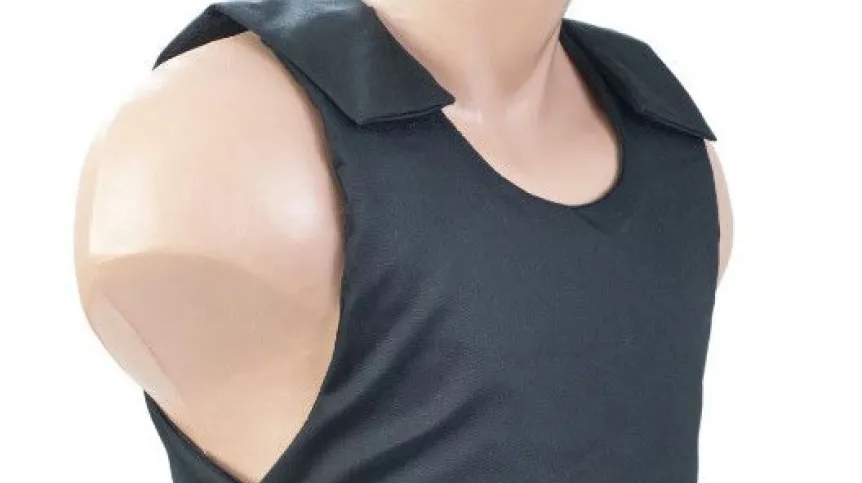
The creators of special liquid that instantly hardens upon impact and can be used, for example, in bulletproof vests, are hoping that this year they will complete the process of commercialisation of the invention. Companies from around the world are interested in the Polish solution.
The invention has been developed by a team of scientists from the Warsaw University of Technology, Military Institute of Armament Technology and the Institute of Security Technologies Moratex in Łódź. The solution is the result of the project "Smart passive armour using rheological liquid with nano structures" under the Operational Programme Innovative Economy.
Materials currently used for the production of ballistic vests are characterized by high rigidity and inflexibility, which has a negative impact on the comfort of wearing vests and the lack of ballistic protection on joints of arms, legs or neck.
According to Dr Marcin H. Struszczyk, director of research at Moratex, the use of liquid allows to improve the flexibility of materials, and thus eliminates these restrictions. It\'s a completely new approach to the design of ballistic protection, mainly body armour.
"In this case do not use, for example, fibres, but specially formulated shear thickening liquid that changes its texture, its viscosity under impact, and becomes hard" - Dr. Struszczyk told PAP.
In the project developed new shear thickening liquids, characterized by a markedly reduced density, which means that the weight of the protective product is lower. Scientists have tried to use the liquids in various forms, for example by applying to fabrics, polyethylene composites, and elastomer composites, creating so-called anti flex pad.
"In the case of anti flex pad, the introduction of such rheological fluid into the elastomer composite decreases the ballistic shield deformation during so-called non-penetrating firing" - added Dr. Struszczyk.
As explained, shield deflection always occurs in the case of fire. In some standards, the allowed deflection is up to 4 cm, which, in the case of the projectile impact in the region of the heart, means practically direct contact of ballistic protection material with internal organs, threatening the trauma, sometimes fatal, because death may occur even without piercing the ballistic shield.
"By introducing the shear thickening fluid we were trying to obtain maximum absorption of impact energy to reduce the instantaneous shield deformation. We were able to do it in 70 percent, which means that it is no longer 4 cm deflection, and only 1 cm. This way we managed to reduce the risk of damage to internal organs" - added Struszczyk.
Additionally, by appropriate shaping of anti flex pad, researchers managed to introduce the so-called thermal channel inside the vest, which should increase thermal comfort.
The solution developed by Polish scientists can be applied wherever the material will have the task of maximum energy dissipation. It can be used in bulletproof vests, but also, for example, in sportswear, impact protection, ties used in the construction of bridges, or in bumpers mounted on trains.
According to Dr. Struszczyk, the invention is currently in the final stages of commercialisation. "I think that by the end of this year we will commercialise it. I can say that not only European, but also global companies are interested in the solution" - he emphasised.
PAP - Science and Scholarship in Poland
szu/ mab/ par/ mrt/
tr. RL













